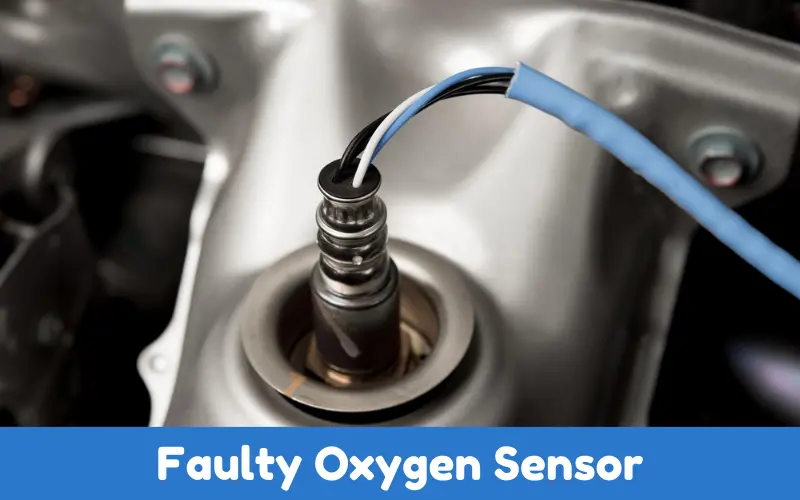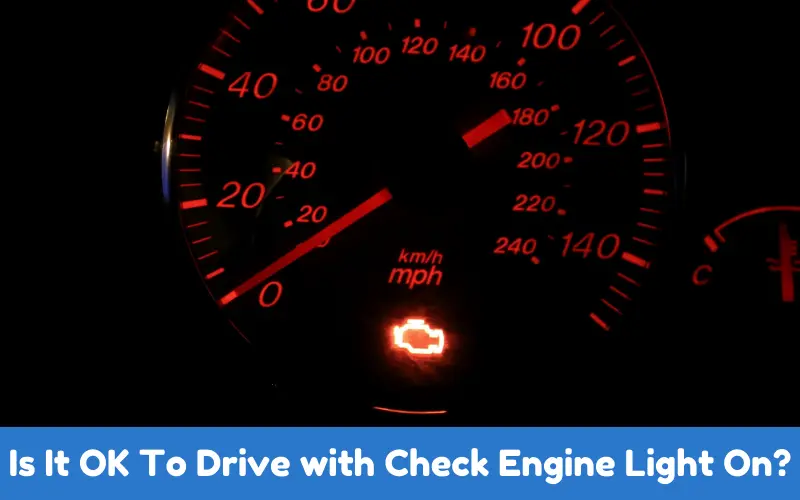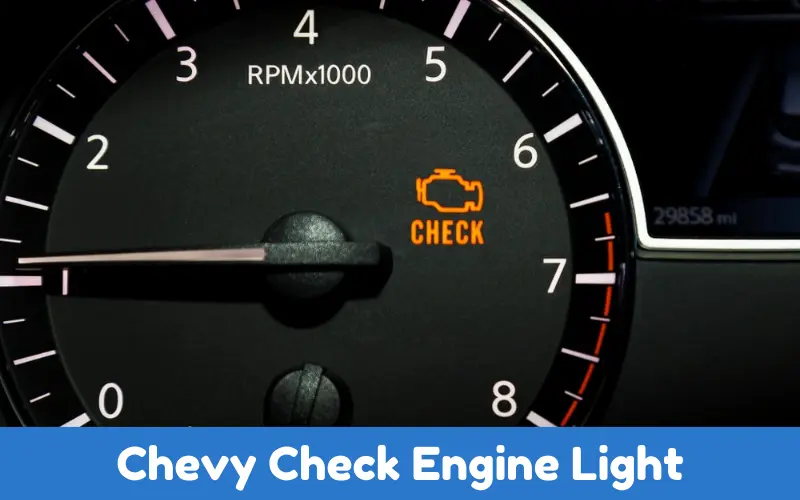When you walk out to your Chevy, we know you just want to hop in and hit the gas. That’s why many newer Chevy Vehicles (too many to name) have a little glowing orange or red warning lamp on your dashboard that will come on and light up before it even needs to go to the shop.
The Chevy check engine light is commonly referred to as CEL (short for check engine light), so if you see it, ensure you see it properly.
We will attempt to describe the major reasons why does Chevy Check Engine Light come on so that you can fix it rather than ignoring it and fix it before it gets worse.
Topic Summary
What Does Chevy Check Engine Light Mean?
While it might seem like a Foreboding Glow, a Check Engine light is just your car’s onboard diagnostics system (OBD-II) talking to you.
The light comes when the car’s computer senses an engine or pollution control system problem.
Your car’s computer illuminates the Check Engine light to alert you to what the automakers call the ‘malfunction indicator lamp’.
The light can be steady or flashing, and the colour of the light varies between vehicles.
Why Does Chevy Check Engine Light On?
The Chevy check engine light may appear for several reasons and the reasons are:
1. Loose or Faulty Gas Cap
Another really simple reason the CEL comes on is that the gas caplet on the end of the gas cap assembly is loose or that the gas cap itself is damaged.
We can have a fault related to evaporative emissions, vapours, and leaking, so we want to tighten that gas cap and have it properly tightened to see if that allows that CEL to go off. If the gas cap is damaged, we must replace it with a new one.
2. Faulty Oxygen Sensor
Fuel efficiency can be checked to see if the engine is running properly (pic. 2). It helps the engine consume fuel properly.
Errors in the workings of a car occur with any part of it. Because of that, the sensor part of engine control is very significant to check fuel efficiency and avoid emissions.

If the sensor is faulty, then it can be replaced with a new one to restore performance.
3. Bad Spark Plugs or Wires
Spark plugs and wires play a vital role in the combustion of gases and vapours. If these parts are worn out or damaged, they can cause problems, such as spark plug issues, which can cause misfires and poor engine performance.
Maintaining and replacing bad spark plugs is important to prevent these problems.
4. Failing Catalytic Converter
Catalytic converters cause fewer chemical pollutants. Faulty output can reduce your vehicle’s performance and fuel economy.
Replacing a defective catalytic converter would be better because it can lead to serious emissions problems that will affect your car’s performance.
5. Engine Thermostat Issues
It gives the engine temperature. A faulty thermostat can overheat an engine and damage it. If the temperature gauge and the check engine light have a problem, this can be the cause.
6. Mass Airflow Sensor Problems
This sensor measures the amount of air entering the engine and decides the quantity of fuel. Setting the wrong value may affect the way the vehicle runs (lack of power) and reduce fuel economy.
How To Fix Check Engine Light On Chevy?
You can follow the following steps to fix or reset the Chevy check engine light.
Check the Gas Cap
Start with ensuring the gas cap is fitted tightly. For some CELs, this alone will be enough.
Observe the Light Behavior
If it is, check to see if your check engine light is flashing or steady. A flashing light usually indicates a more serious issue (e.g., an engine misfire) than a steady light.
Scan for Trouble Codes
Read the trouble codes listed on the computer with an OBD-II scanner. The scanner gives more detailed information about what went wrong.

Scanning the computer is free in many auto parts stores.
Consult a Professional
However, if you don’t know the source of the problem or the light continues to stay on after you address easy issues, draw on the knowledge of a good mechanic.
They can perform a real diagnostic test to pinpoint the issue and proceed with the appropriate repair.
Don’t Ignore the Light
If there is no immediate problem, you can ignore the check engine light. However, costly repairs can begin to pile up when a problem that could have been fixed for a few dollars needs to be fixed.
If an imminent problem could soon affect your car’s drivability, you will want to fix it immediately.
Can You Drive Chevy with Check Engine Light On?
Depending on whether the situation is OK, to begin with, it’s fairly safe to drive with it on. Check engine lights are generally OK to drive unless the light blinks.
You can drive for a short distance, but get it checked as soon as possible because without knowing the exact trouble code, you won’t know what’s wrong and could damage something.

When it flashes, it indicates a serious problem. It is often engine-related but can also be other critical problems, such as misfires. Pull over to a safe spot and shut off the ignition immediately.
Driving with this type of warning light will result in serious engine damage and typically require more expensive repairs.
FAQs About the Chevy Check Engine Light
What Should I Do If the Check Engine Light Comes On?
Check that the gas cap fits tightly and is completely closed. If the ‘check engine’ light remains on or begins to flash, have the vehicle diagnosed by a qualified mechanic. By then, some damage may have been done, but without your attention, it would only get worse.
What Does It Mean If the Check Engine Light is Flashing?
A flashing check engine warning light means there is a serious issue somewhere in your car, and you should pull over and shut down your engine immediately. Misfires or other critical issues are likely to be the cause. Pull over safely and immediately contact a mechanic who can service your car.
Can I Drive My Chevy with the Check Engine Light On?
Well, that depends on how bad the problem is. A steadily illuminated check engine light, with no decrease in performance, may be OK for short trips. Still, driving isn’t a good idea if you drive for a while and the light stays on, or if the light is flashing, or you’re experiencing a performance problem, strange noises, or some other symptom. You should get the problem seen before trying to go anywhere.
How Much Does It Cost To Fix a Check Engine Light?
The expense of a check engine light repair can encompass a very broad price band, depending on the problem. A simple gas cap replacement can be relatively inexpensive, while an oxygen sensor or catalytic converter replacement can be much more expensive. A diagnostic report can disclose the problem, and an estimate for a repair can be requested.
Can I Reset the Check Engine Light Myself?
An OBD-II scanner can be used to clear the check engine light. Still, it’s generally not a good idea to press that reset button without first diagnosing what caused the light to go on in the first place, as it’s likely to come back on if you don’t get the original problem fixed.
Conclusion
Then, you’ve got a pretty good way to maintain your Chevy. Find out what triggers it and then care for it by getting things fixed before they go seriously wrong.
If you have questions or need assistance, contact your local Chevy dealer or bring your vehicle to a reputable mechanic. Maintaining Chevy vehicles will help to reduce problems while driving.

